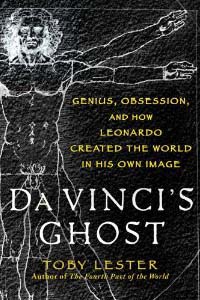- HOME
- INTRO TO THE FORUM
- USE AND MISUSE
- BADLY WRITTEN, BADLY SPOKEN
- GETTING
TO KNOW ENGLISH - PREPARING FOR ENGLISH PROFICIENCY TESTS
- GOING DEEPER INTO ENGLISH
- YOU ASKED ME THIS QUESTION
- ADVOCACIES
- EDUCATION AND TEACHING FORUM
- ADVICE AND DISSENT
- MY MEDIA ENGLISH WATCH
- STUDENTS' SOUNDING BOARD
- LANGUAGE HUMOR AT ITS FINEST
- THE LOUNGE
- NOTABLE WORKS BY OUR VERY OWN
- ESSAYS BY JOSE CARILLO
- Long Noun Forms Make Sentences Exasperatingly Difficult To Grasp
- Good Conversationalists Phrase Their Tag Questions With Finesse
- The Pronoun “None” Can Mean Either “Not One” Or “Not Any”
- A Rather Curious State Of Affairs In The Grammar Of “Do”-Questions
- Why I Consistently Use The Serial Comma
- Misuse Of “Lie” And “Lay” Punctures Many Writers’ Command Of English
- ABOUT JOSE CARILLO
- READINGS ABOUT LANGUAGE
- TIME OUT FROM ENGLISH GRAMMAR
- NEWS AND COMMENTARY
- BOOKSHOP
- ARCHIVES
Click here to recommend us!
TIME OUT FROM ENGLISH GRAMMAR
This section features wide-ranging, thought-provoking articles in English on any subject under the sun. Its objective is to present new, mind-changing ideas as well as to show to serious students of English how the various tools of the language can be felicitously harnessed to report a momentous or life-changing finding or event, to espouse or oppose an idea, or to express a deeply felt view about the world around us.
The outstanding English-language expositions to be featured here will mostly be presented through links to the websites that carry them. To put a particular work in better context, links to critiques, biographical sketches, and various other material about the author and his or her works will usually be also provided.
Measuring up to the human body’s architectural perfection
No doubt most of us have been intrigued and puzzled by the Vitruvian Man, Leonardo da Vinci’s famous drawing of a man in a circle and a square that has become a cultural icon for the nature of genius, the beauty of the human form, and the universality of the human spirit. But how many of us know that the Vitruvian Man is da Vinci’s own self-portrait in which he had stripped himself down to measure up to the human body’s perfection in architectural terms?

In Da Vinci’s Ghost: Genius, Obsession, and How Leonardo Created the World in His Own Image (Free Press, 275 pages), the author Toby Lester makes an enthralling recreation of how the Vitruvian Man came to being and what it represents—as a defining statement about the life and aspirations of an immensely talented but insecure Italian artist in the Middle Ages whose talent could not quite compensate for the social disadvantages posed by his inadequate education, uncertain income, illegitimate birth, and aversion to marriage.
“At a superficial level, the picture is simply a study of individual proportions,” says Lester in his introduction to Da Vinci’s Ghost. “But it’s also something far more subtle and complex. It’s a profound act of philosophical speculation. It’s an idealized self-portrait in which Leonardo, stripped down to his essence, takes his own measure, and in doing so embodies a timeless human hope: that we just might have the power of mind to figure out how we fit into the grand scheme of things.”
Says Cullen Murphy, editor at large of Vanity Fair, in a review of the book: “Like Da Vinci’s famous drawing, Toby Lester’s book is a small wonder—a work of brilliant compression that illuminates a whole world of life and thought. Lester proves himself to be the perfect guide to the Renaissance and beyond—affable, knowledgeable, funny. Leonardo’s Vitruvian Man turns out to be a road map that can take us to remarkable places—once you learn how to read it.”
Read an excerpt from Toby Lester’s Da Vinci’s Ghost in the npr.org website now!
ABOUT THE AUTHOR:
Toby Lester is a contributing editor to The Atlantic for which he has written extensively. A former Peace Corps volunteer and United Nations observer, he wrote The Fourth Part of the World (2009), a book about the map that gave America its name; it became a finalist for the Barnes & Noble Discover New Writers Award and was picked as a Book of the Year by several other publications.






